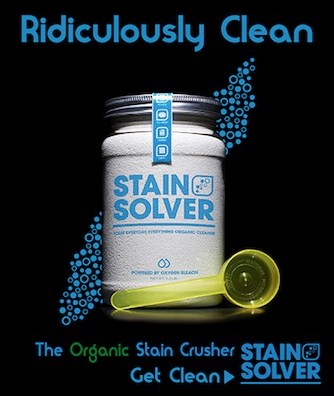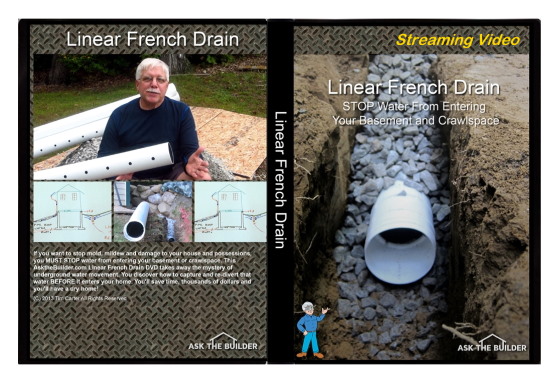Crawl Space Encapsulation or Not

This is a typical crawl space vent that’s supposed to allow air into and out of a crawl space. They just don't work. It's like trying to breath through a small cocktail straw. © 2017 Tim Carter
Crawlspace Encapsulation TIPS
- Lots of incorrect info out there
- Bare soil pumps up water constantly
- Rectangle vents all but worthless
- Cover soil with special plastic
- CLICK HERE to Get Tim's FREE & FUNNY Newsletter!
DEAR TIM: My head is spinning from all of the conflicting information I'm seeing online about crawl space encapsulation. Should it be done or should I just rely on the traditional vents I have in my foundation? I have a 1,100 square-foot crawl space and the slate floor above is ice cold because there's no insulation. What would you do if this were your home and why? - Richard J., Toledo, OH
DEAR RICHARD: I can understand your frustration. While the Internet is an amazing resource, the barrier to entry with respect to publishing is lower than the bottom of Death Valley. If you can fog a mirror and type on a keyboard, you're capable of posting your opinion about how you think things should be done on the Internet.
Bad JuJu Info
Back before the Internet, traditional book publishers would do a fairly good job of vetting an author before they agreed to publish his work. This filtering process kept much of the erroneous information out of the mainstream.
It was possible to self-publish, but those that chose to do this had a tough time distributing their work. The Internet has removed these barriers and filters.
To stop your head from spinning, let's dive into the science of crawl spaces. I prefer to base my opinions and beliefs on science, not speculation.
Bare Soil
A traditional crawl space under a home consists of soil or sand that was the ground before construction started. Sometimes the topsoil is removed, but what you see is bare soil. I've been in crawlspaces that have had concrete poured on top of the soil or some washed gravel.
Water Vapor Pump
Unless you live in the Atacama Desert, the ground under and around your home contains moisture. This liquid water wants to evaporate and get back up to the atmosphere. If you could see water vapor, you'd see a constant flow of this gas floating up into the air. When it's warm, the flow rate is faster.
Water = Mold
This water vapor, when mixed with wood, is not a good thing. If enough water vapor collects in a crawl space before getting back to the outside atmosphere, it can condense and turn to liquid water again. This water fuels mold growth and fungi growth you might call wood rot.
Old builders knew about this. The best they could do was to provide an escape path of the water vapor to the outside.
Crawl Space Vents
That's what the crawl space vents are for in your foundation. The trouble is, they don't work too well. I've been in crawl spaces when the wind is howling outdoors and barely have felt a puff of air come into an open foundation vent.
Plastic The Answer
Once plastics were gaining traction in the 1960's, thin sheets of vapor barrier were available. While not perfect, they did a magnificent job of blocking the movement of water vapor. Cross laminated vapor barriers that meet or exceed the ASTM E 1745 are some of the best products out there to block water vapor.
Tu-Tuf is an excellent cross-laminated vapor barrier that passes the ASTM E 1745 standard. This is what you want to use to cover the soil in your crawlspace.
CLICK HERE TO ORDER Tu-Tuf NOW.
An entire industry has evolved in the past fifteen years that specializes in encapsulating crawl spaces so the water vapor stays is the soil. When done correctly, encapsulation is an excellent way to arrest the movement of water vapor from the soil up into your home.
Puffed Barriers
Realize that other gases can escape from the soil under your crawl space and cause any plastic or membrane to puff up like a balloon. Be sure to discuss this possibility with any contractor you're getting bids from.
These same high-performance vapor barriers should be placed under poured concrete basement floors to stop water vapor movement. The same is true for any house that uses a slab-on-grade foundation. Water vapor can and does pass through poured concrete.
Stain Solver Cleaner

Stain Solver is MADE in the USA with USA ingredients that are food-grade quality. CLICK THE IMAGE to order some NOW.
Once you've encapsulated the soil and stopped the water vapor from entering your crawl space, I'd insulate the floor joists. Be sure there's no mold on the wood.
Clean it off using a Stain Solver.
Stain Solver is a certified organic oxygen bleach that you mix with hot tap water. You stir it until the pure powder dissolves and then pour it into a hand-pump garden sprayer.
Saturate the wood in the crawlspace, and even the soil if you want to get rid of mold and mildew.
Allow it to dry before you insulate. Put fans in the crawlspace to help speed up the drying process.
IMPORTANT TIP: I'd do all this mold remediation before I'd install any encapsulation product or system in the crawl space.
Stop Liquid Water
Some crawl spaces are plagued with standing water or running water in periods of heavy rain. You can stop this water from entering a crawl space by installing one of my linear french drains around the outside of your home.

Do your own DIY install of a Linear French Drain with Tim Carter's time-tested methods and materials! CLICK IMAGE TO ORDER NOW!
My college course in hydro-geology taught me how to capture and divert water in the soil. A linear french drain is just a gutter in the ground.
As water passes through the soil sideways through the top soil where there's air, the gravel in the trench captures the water and gravity pulls it down to the perforated drain pipe.
Many homeowners like you have used my technique to dry out their wet basements and crawlspaces. CLICK HERE to get a professional Streaming Video showing you how to STOP water problems in your crawlspace.
Column 1068
35 Responses to Crawl Space Encapsulation or Not